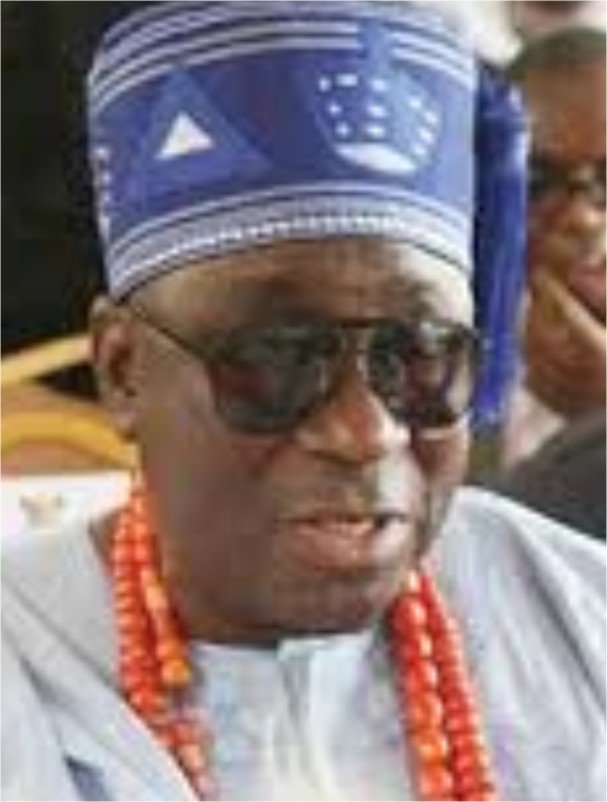At any given opportunity, Lagos Islanders are wont to flaunt Eyo, a masquerader, that dresses in white apparel, as an emblem of cultural superiority. Talk of Eyo, in their presence, they proudly thumb their chests and boast that the masquerader is now the logo of the state, Lagos Coat of Arms! Yes, besides, its festival attracts a large number of foreign tourists, earn a huge amount of foreign exchange for Nigeria and Lagos State.
In no small way, it boosts local Brisk business. Little do most people know that Eyo is not an indigene of Lagos Island. Eyo was brought from Ijebu to Lagos Island from Iperu in the 18th century.
According to history, Eyo Masqueraders came from Iperu-Akesan in Ogun State.
The town is the craddle of Eyo.
Iperu is in Ikenne Local Government area of Ogun State. There are five types of Eyo in Iperu.
They are from five royal families in the town.
Iga Pakerike is the coven for redcapped Eyo, Iga Agbonmagbe parades blue-capped Eyo. There were also Iga Magusen, Iga Amororo and Iga Fibigbuwa. All have different colour caps for their Eyo(s).
It is on record that Eyo was brought to Lagos Island by its handlers in the 18th century to entertain an in-law driven by a desire to display a spectacle to convince his in-laws of Ijebu rich culture.
Eyo is now synonymous with Lagos Island. It’s their pride in which they rejoice and celebrate with happiness. Eyo is a spiritual being that hits the street dressed in white clothes from head to toe. Unlike most other masqueraders in Yorubaland, it spots a wide-brimmed hat. That perhaps, is a legacy from Europe or Brazil. White net that covers its face affords it an unhindered visibility on the road. Ardent fans of Eyo are quick to assert that Eyo is Lagos Island-personified.
It’s difficult to fault the claim of the Islander, who is not only passionately enamoured by Eyo masquerader, which is , without exaggeration, the embodiment of Lagos culture at its zenith. If you are in doubt, come to Lagos Island on the day Eyo procession holds there. Mostly, the procession is held as a send-forth ritual for a departed king, chief or a big cheese on Lagos Island. Besides, it is also staged to celebrate and complement the crowning of a new king or installation of a chief.
Before the ‘D’ day of Eyo procession on the streets of Eko, that is the name the Portuguese explorers gave to Lagos Island. The Island would be agog with different activities as warm-up and preparation for the big day. Different groups would organize merriment vigils. Musicians of choice are invited to entertain guests and well wishers. Aso-Ebi would have been picked, bought and sewed into different styles to match the tastes of participants. Usually, inadequacy is never in the dictionary of organizers of the festivity, as surfeit of different kinds of food (foreign and local), beer, wine and hard drinks to keep dull moments at bay as people unwind in a pleasurable mood is the order of the day.
A week before the festival, Adamu Eyo Orisa that is recognised as the leader of the masqueraders, would take a special staff to the Iduganran palace, the official residence of Oba Eko. The taking of the staff to the palace is a notification to the Oba that Eyo festival would start in seven days time. If the staff is taken to the palace on Sunday, the festival starts following Saturday. On the ‘D’ day, Azikiwe Street from Idumota to Tinubu Square becomes more lively than any other day despite that the street is one of the major commercial centres in Lagos that daily records buying and selling of goods and commodities. On the day, the street is even closed to traffic to allow a free access to the Oba’s palace. The street seething with spectators (home and foreign) in different colours caught up in arms and legs that are yearning to satisfy hunger and eagerness to feed their eyes on the synosure of the day, Adamu Eyo Orisa. On Azikiwe Street that day, from Idumota to Tinubu Square taxi-cabs, motor bikes are prohibited. Besides, wearing sandals and slippers are not allowed, while women are forbidden to spot Suku hair style. Eyo masqueraders don’t treat fools and violators gladly. Violators receive instant punishment.
As the day heralds the procession and parade of Eyo, motorists avoid most streets in the neigbourhood of Azikiwe Street. This is not unconnected with heavy pedestrian traffic lured to the area by the festivity of the day. Instead of the usual commercial activities on the street, what takes their place are masqueraders in white apparels holding a bludgeon-like staff with its two hands, chanting the panegyrics. The street is literally taken over by handlers of Eyo, sellers of souvenirs that have to do with the festival are made available to ready buyers. This, it was learnt, was to give maximum space for the Eyo to display in their splendor unhindered. Eyo holding long staff called opanbata, chanting the panegyrics of the ritual: Mo yo fun o, mo yo funrami, literally meaning: ’ I am happy for you and happy for myself.’ There are other deeper spiritual panegyrics that sound weird to an uninitiated flowing freely from Eyo’s mouth. The initiated regard them embellishment stimulant to raise the spirit of Eyo from the coven.
– Tajudeen Adigun
08039180360


